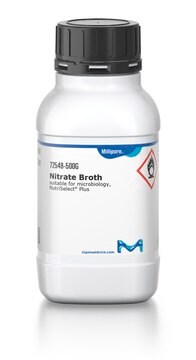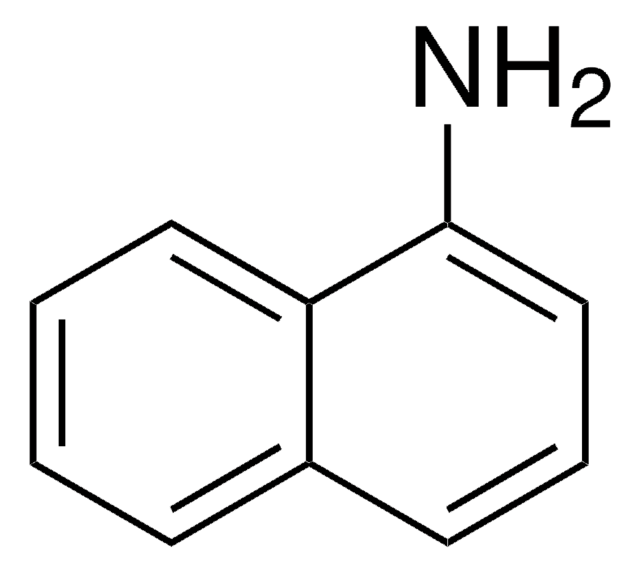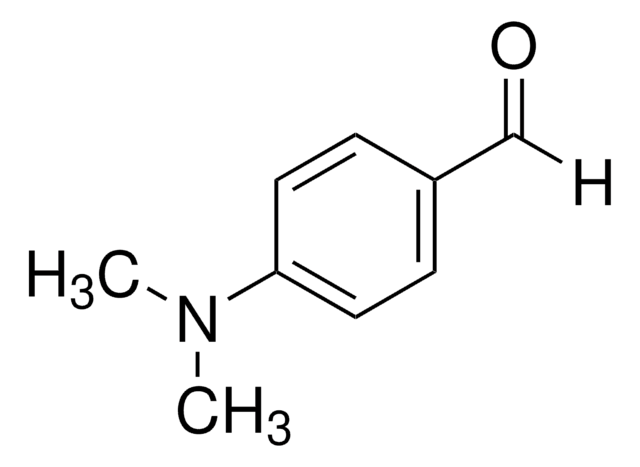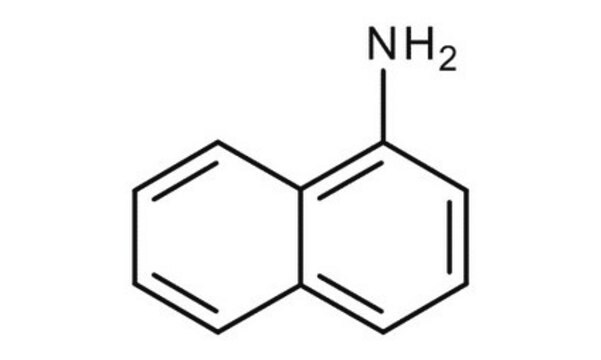38497
Nitrate Reagent A
suitable for microbiology
Sinonimo/i:
1-Naphthylamine solution
About This Item
Prodotti consigliati
Nome Commerciale
BioChemika
Livello qualitativo
Durata
limited shelf life, expiry date on the label
Composizione
acetic acid 5 N, 1000 mL
α-naphthylamine, 5 g
tecniche
microbe id | metabolite detection: suitable
applicazioni
agriculture
clinical testing
environmental
food and beverages
pharmaceutical
microbiology
Compatibilità
Enterobacter spp.
Neisseria spp.
anaerobic bacteria
bacteria
InChI
1S/C10H9N/c11-10-7-3-5-8-4-1-2-6-9(8)10/h1-7H,11H2
RUFPHBVGCFYCNW-UHFFFAOYSA-N
Descrizione generale
Avvertenze
Danger
Indicazioni di pericolo
Classi di pericolo
Eye Dam. 1 - Skin Corr. 1B
Codice della classe di stoccaggio
8A - Combustible corrosive hazardous materials
Classe di pericolosità dell'acqua (WGK)
WGK 1
Punto d’infiammabilità (°F)
Not applicable
Punto d’infiammabilità (°C)
Not applicable
Dispositivi di protezione individuale
Faceshields, Gloves, Goggles, type ABEK (EN14387) respirator filter
Scegli una delle versioni più recenti:
Possiedi già questo prodotto?
I documenti relativi ai prodotti acquistati recentemente sono disponibili nell’Archivio dei documenti.
I clienti hanno visto anche
Articoli
Vibrio Detection
On the Trail of Campylobacter
For microbiologists the most fundamental stain was developed in 1884 by the Danish bacteriologist Hans Christian Gram.
Sigma-Aldrich.com presents an article concerning Differentiation of Escherichia coli from coliforms.
Protocolli
US EPA Method 8270 (Appendix IX): GC Analysis of Semivolatiles on Equity®-5 (30 m x 0.25 mm I.D., 0.50 μm)
Il team dei nostri ricercatori vanta grande esperienza in tutte le aree della ricerca quali Life Science, scienza dei materiali, sintesi chimica, cromatografia, discipline analitiche, ecc..
Contatta l'Assistenza Tecnica.












